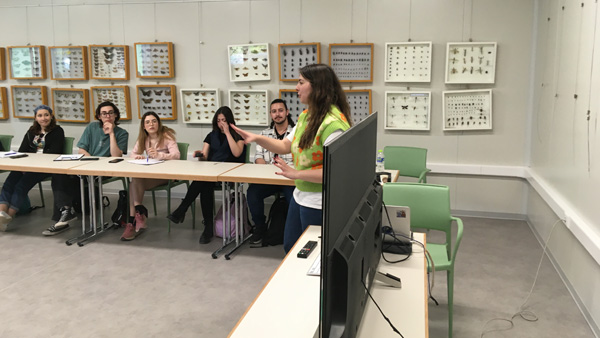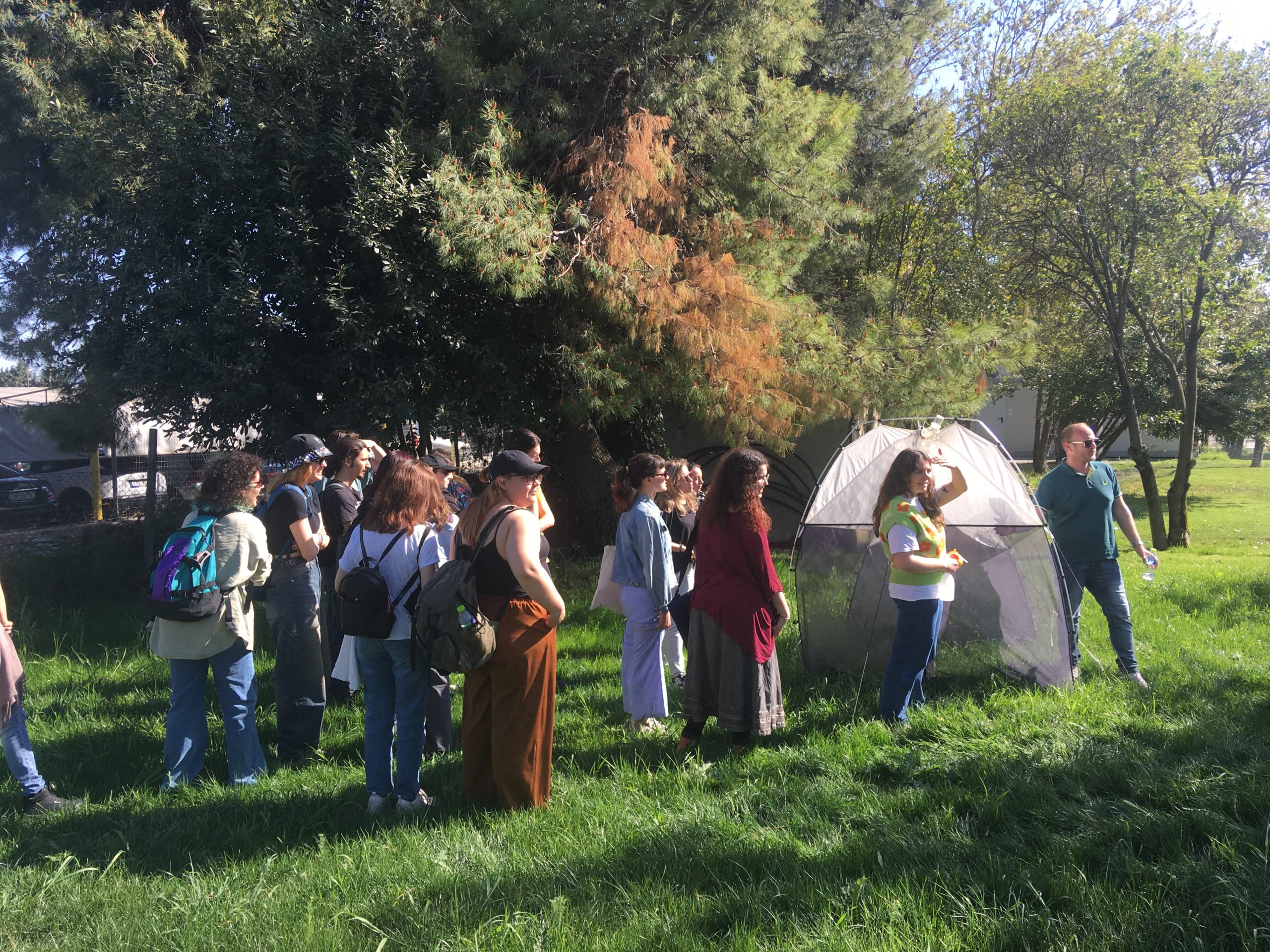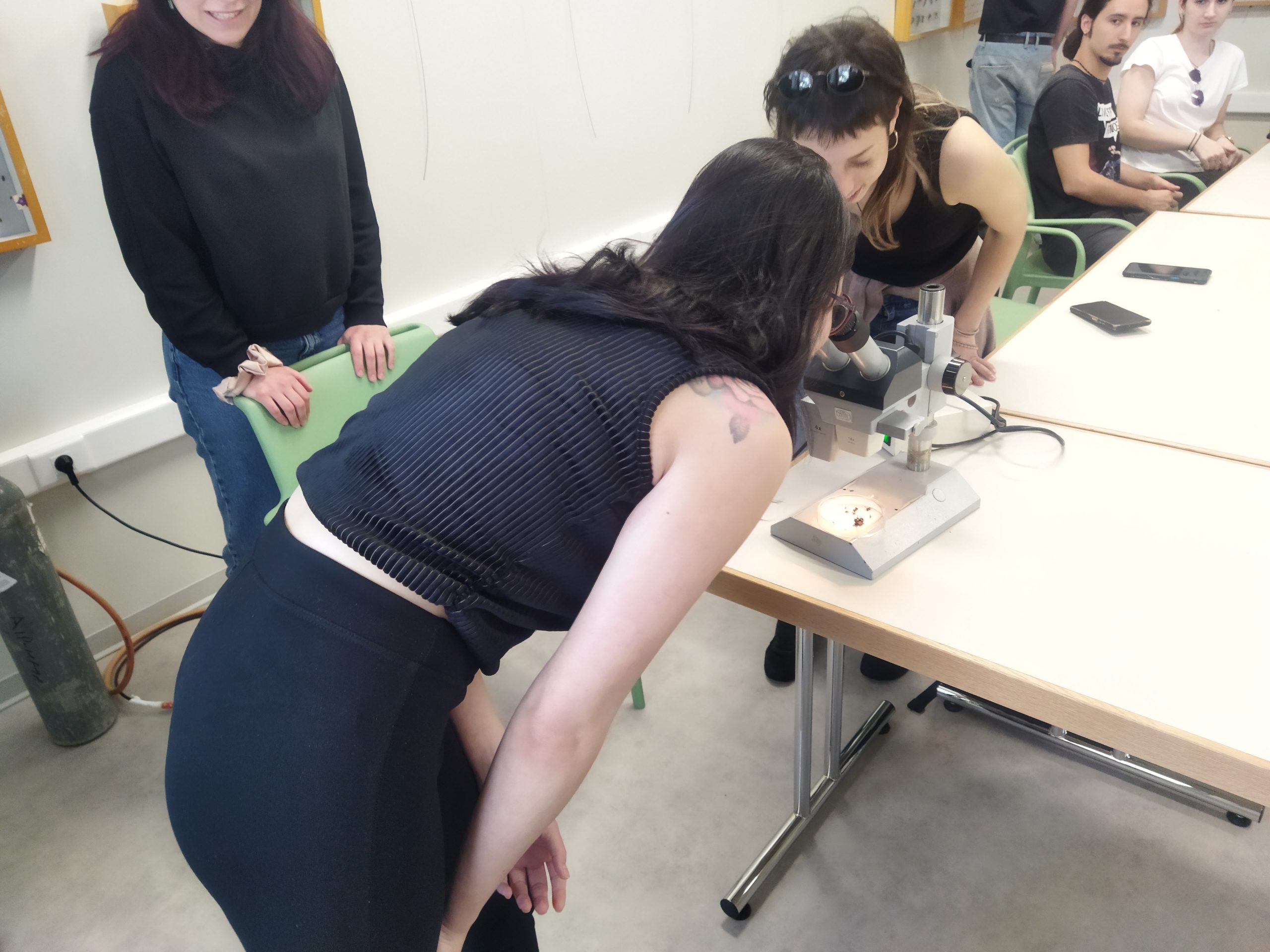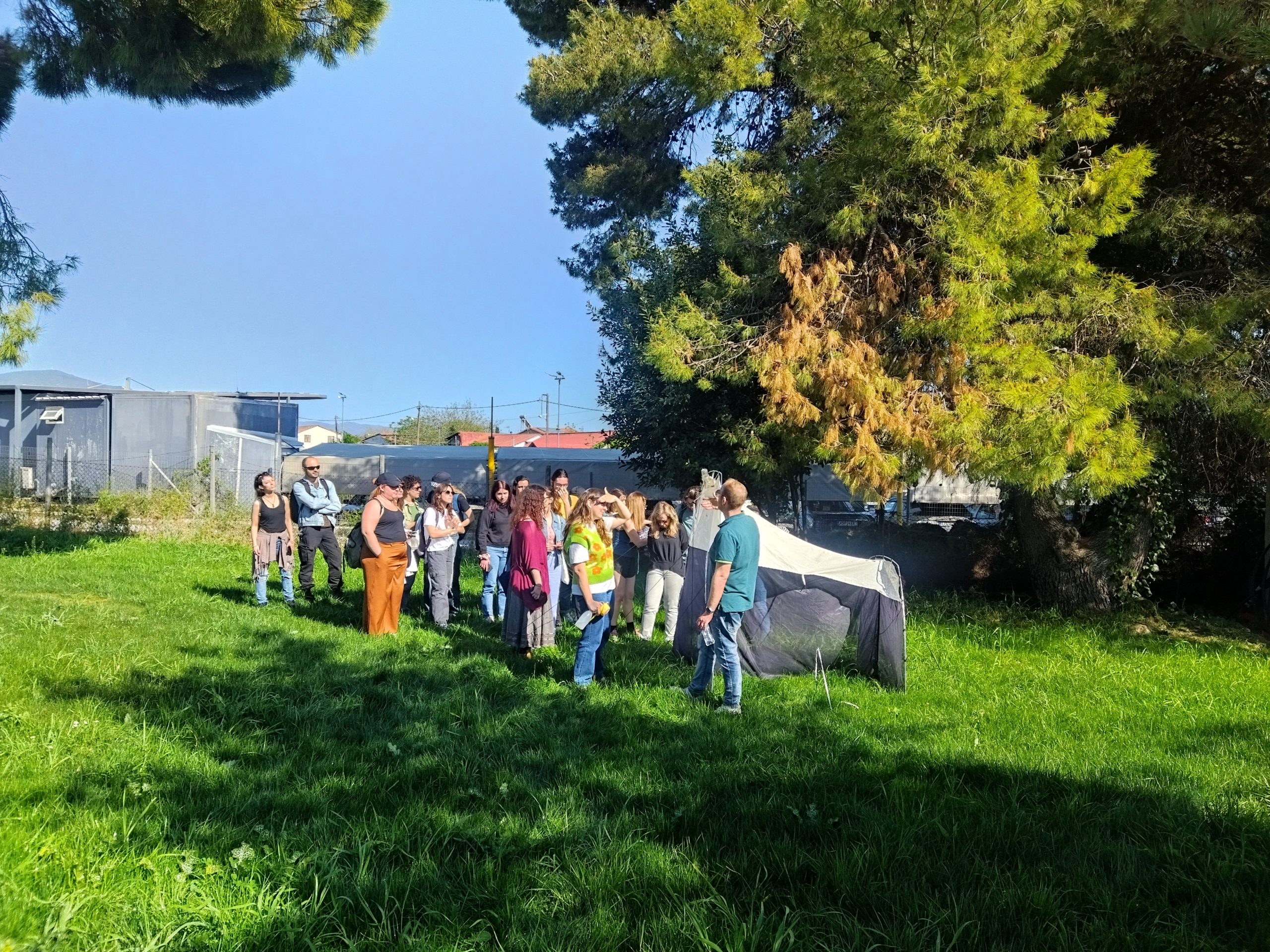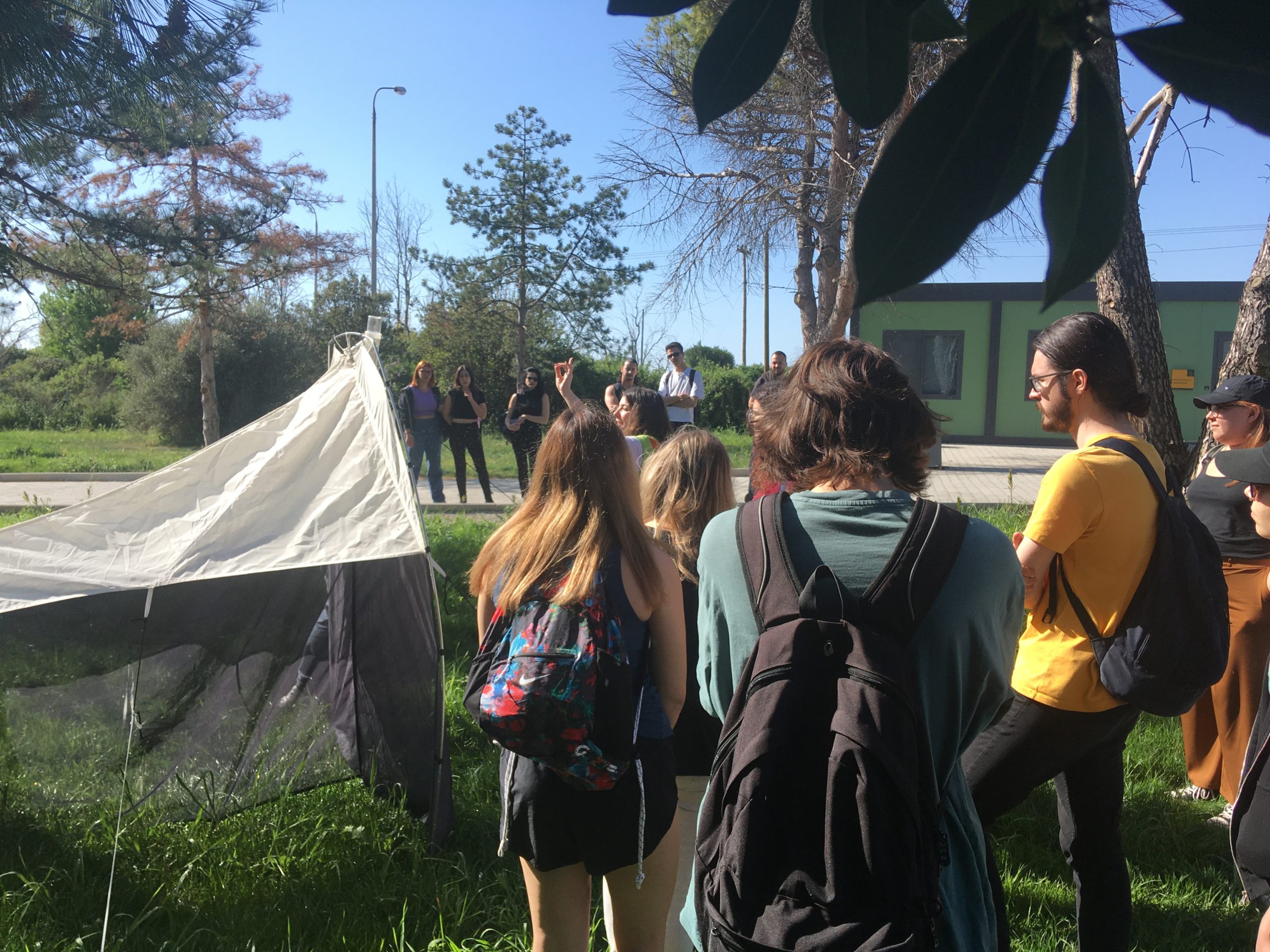Arthropods of the high mountains in Greece
Faculty of Agriculture & School of Biology of the Aristotle University of Thessaloniki
Farm of the Faculty of Agriculture of the Aristotle University of Thessaloniki, Greece
11 April 2024
The event provided participants with a comprehensive exploration of biodiversity and its significance. It began with an introduction to the goals of the BGE project, emphasizing the importance of biodiversity preservation for maintaining ecosystem balance, supporting ecosystem services, and safeguarding global health and well-being. Participants then delved into the world of insect biodiversity, learning about the diverse range of insects found in various ecosystems and their crucial roles in ecosystem functioning.
They discovered the myriad benefits that insects provide to agriculture, medicine, and beyond, including pollination, pest control, nutrient cycling, and decomposition. The event also included practical sessions, such as the presentation of the malaise trap—an essential tool for capturing flying insects. Participants gained insights into the design and operation of the trap, learning how it effectively collects specimens. They engaged in hands-on activities, studying collected samples under a stereoscope, allowing for detailed examination and identification of various insect species. They also participated in a DNA game, which allowed them to understand in simple way the principles of DNA barcoding. Furthermore, attendees learned about the technical aspects of biodiversity research, including the importance of accurate metadata collection during citizen science activities and the use of the MinION sequencing device for barcode sequencing. They were introduced to the BOLD database and its wealth of information, highlighting its significance in biodiversity research.
Goals
- Introduction to the importance of biodiversity research and the BGE Project Goals: Participants were introduced to the overarching goals of the BGE project, which aims to address the pressing issue of biodiversity loss.
- Exploration of Insect Biodiversity: Attendees gained insights into the diverse range of insects found in various ecosystems. They learned about the crucial roles that insects play in ecosystem functioning and their profound impact on human activities, including agriculture, medicine, and beyond.
- Practical Hands-On Activities: Practical sessions, such as the presentation of the malaise trap and the study of collected samples under a stereoscope, provided participants with valuable hands-on experience in entomological research. They also participated in a DNA game in which they learned the principles of DNA barcoding.
- Technical Aspects of Biodiversity Research: Participants were introduced to the technical aspects of biodiversity research, including the importance of accurate metadata collection during citizen science activities. They learned about the MinION sequencing device for barcode sequencing and were introduced to the BOLD database, gaining insights into its significance in biodiversity research.
Feedback summary
Participants engaged in fascinating discussions and showed great interest. The venue, which was a site of entomological research, was the perfect setting for such an event, as there were lots of preserved insect exhibits and on-site experiments about entomology (greenhouses, agricultural setups, etc.).

